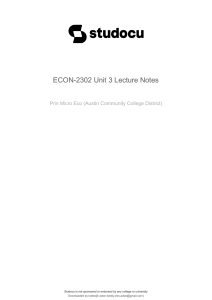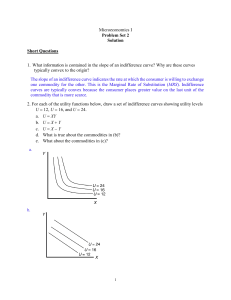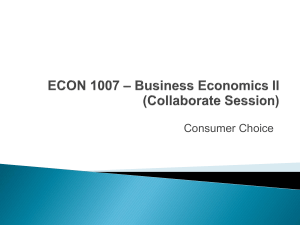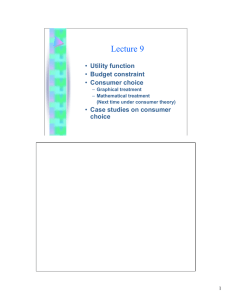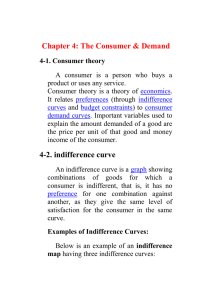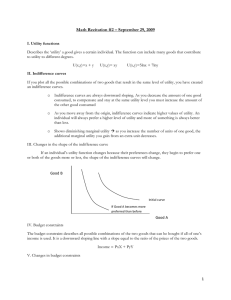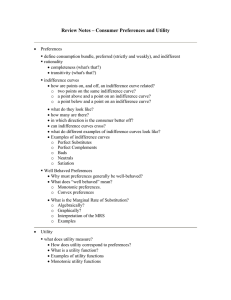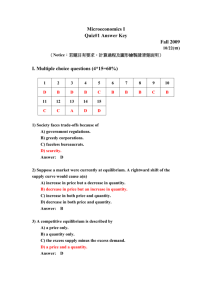answers - University of Southern Indiana
advertisement
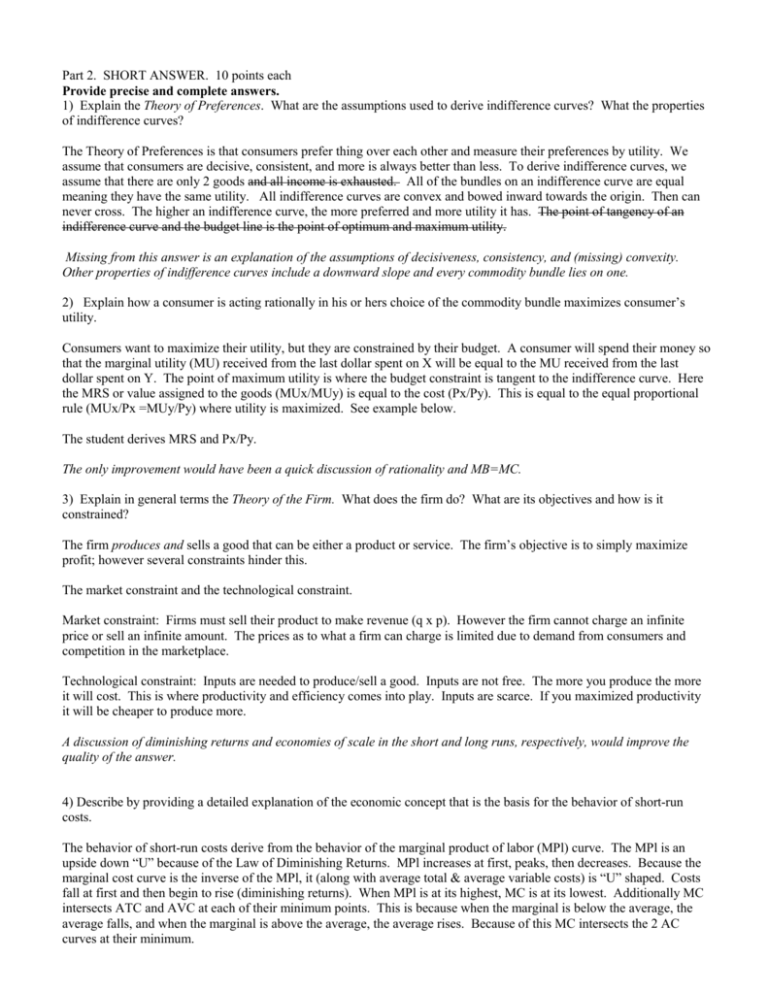
Part 2. SHORT ANSWER. 10 points each Provide precise and complete answers. 1) Explain the Theory of Preferences. What are the assumptions used to derive indifference curves? What the properties of indifference curves? The Theory of Preferences is that consumers prefer thing over each other and measure their preferences by utility. We assume that consumers are decisive, consistent, and more is always better than less. To derive indifference curves, we assume that there are only 2 goods and all income is exhausted. All of the bundles on an indifference curve are equal meaning they have the same utility. All indifference curves are convex and bowed inward towards the origin. Then can never cross. The higher an indifference curve, the more preferred and more utility it has. The point of tangency of an indifference curve and the budget line is the point of optimum and maximum utility. Missing from this answer is an explanation of the assumptions of decisiveness, consistency, and (missing) convexity. Other properties of indifference curves include a downward slope and every commodity bundle lies on one. 2) Explain how a consumer is acting rationally in his or hers choice of the commodity bundle maximizes consumer’s utility. Consumers want to maximize their utility, but they are constrained by their budget. A consumer will spend their money so that the marginal utility (MU) received from the last dollar spent on X will be equal to the MU received from the last dollar spent on Y. The point of maximum utility is where the budget constraint is tangent to the indifference curve. Here the MRS or value assigned to the goods (MUx/MUy) is equal to the cost (Px/Py). This is equal to the equal proportional rule (MUx/Px =MUy/Py) where utility is maximized. See example below. The student derives MRS and Px/Py. The only improvement would have been a quick discussion of rationality and MB=MC. 3) Explain in general terms the Theory of the Firm. What does the firm do? What are its objectives and how is it constrained? The firm produces and sells a good that can be either a product or service. The firm’s objective is to simply maximize profit; however several constraints hinder this. The market constraint and the technological constraint. Market constraint: Firms must sell their product to make revenue (q x p). However the firm cannot charge an infinite price or sell an infinite amount. The prices as to what a firm can charge is limited due to demand from consumers and competition in the marketplace. Technological constraint: Inputs are needed to produce/sell a good. Inputs are not free. The more you produce the more it will cost. This is where productivity and efficiency comes into play. Inputs are scarce. If you maximized productivity it will be cheaper to produce more. A discussion of diminishing returns and economies of scale in the short and long runs, respectively, would improve the quality of the answer. 4) Describe by providing a detailed explanation of the economic concept that is the basis for the behavior of short-run costs. The behavior of short-run costs derive from the behavior of the marginal product of labor (MPl) curve. The MPl is an upside down “U” because of the Law of Diminishing Returns. MPl increases at first, peaks, then decreases. Because the marginal cost curve is the inverse of the MPl, it (along with average total & average variable costs) is “U” shaped. Costs fall at first and then begin to rise (diminishing returns). When MPl is at its highest, MC is at its lowest. Additionally MC intersects ATC and AVC at each of their minimum points. This is because when the marginal is below the average, the average falls, and when the marginal is above the average, the average rises. Because of this MC intersects the 2 AC curves at their minimum.
